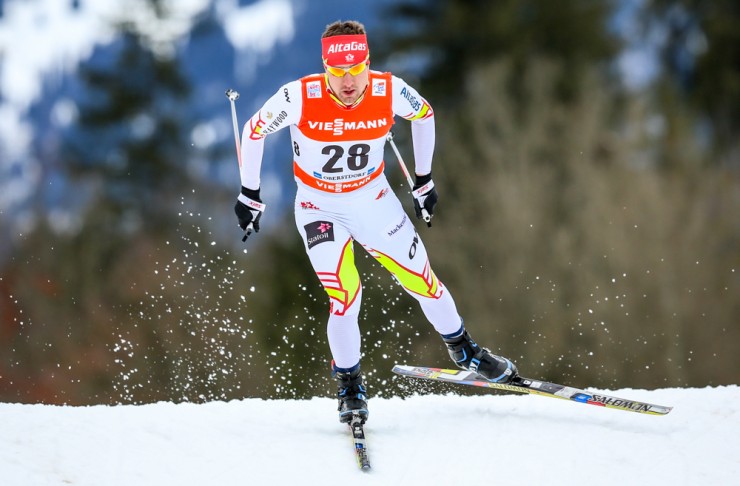
For this week’s workout, we went back in time five-plus years to a session Canadian World Cup Team veteran Ivan Babikov shared with us in August 2010. The following comes from his days with the Russian national team and involves continuous-and-varied bounding intervals — and it’s brutal. See the original pro workout here.
***
[circa August 2010]
The harder the race, the greater the chance you’ll see Ivan Babikov at the top of the result sheet. So it’s no surprise that he uses a brutally difficult training session to prepare himself for the winter.
In an interview from his home in Canmore, Babikov said that this workout – a variation on bounding intervals – was a holdover from his younger days training in Russia.
In Canada, Babikov said, most athletes do their bounding on a single hill, “up and down and up and down.” His version is more continuous, and more varied: following the five-kilometer World Cup loop at the Canmore Nordic Center, Babikov bounds all of the climbs, and use the flats and descents for recovery.

Before starting the business end of the workout, Babikov said that he usually pedals his bike to the nordic center from his home in Canmore as a warm-up. He brings standard-length classic poles, rather than the shorter ones that athletes often use for bounding – “so I can reach higher.”
The workout itself is nothing fancy. Babikov will start off running along the trail at the nordic center, and then begins bounding whenever he gets to an uphill. The technique he uses is a full bound — not like moosehoofs or ski walking.
“I just do strong, powerfull, uphill, long strides….It’s really like striding; it’s not like running,” he said. “It looks like skiing tempo.”
Proper technique and intensity pegs Babikov’s heart rate at Zone 3 on the climbs, with the occasional foray into Zone 4. “The longer [the] uphill and the steeper [the] uphill, the higher it gets,” he said.
When Babikov gets to the top of a hill, he doesn’t stop — he just switches to normal running. It’s not an easy pace, either — just enough to recover to the point where he can work harder on the next climb. He said he usually stays in Zone 2, “just to get the breath back.”
“You switch right away [at the crest of each climb]. It’s really, really hard, but that’s the point of the training….you’re lactated and really tired,” he said. “That’s how you get in the race — it’s the same. You go hard, hard, hard, but at the top of the uphill is where the best are dropping other guys.”
Usually, Babikov will complete three or four loops of the 5 k at the nordic center, for a total of two to two-and-a-half hours of training. He likes using the cross-country trails because they offer the same rolling terrain that he’s faced with in winter.
The workout is “really hard on the legs,” and Babikov ends the session “exhausted.” But the benefits are numerous.
“I think it’s where I get my strong legs from,” he said, adding that the bounding also helps with core and endurance.
In Russia, he said that skiers do this type of training all the time, even twice a week. Readers may want to start by trying workout once a week, and perhaps for less than Babikov’s two to two-and-a-half hours.
The workout: Continuous bounding intervals
Warmup: Ride your bike to training site
Bring: Standard-length classic poles
Start: by trail running, preferably on cross-country trails, then bound (explosive, full bound) when you reach an uphill (should be in Zone 3, occasionally Zone 4)
At top of each hill: resume running at a pace that is just enough to recover (Zone 2). Resume bounding whenever you reach an uphill.
Work up to: 3-4 five-kilometer loops, or 2 1/2 hours of training, potentially more than once a week



